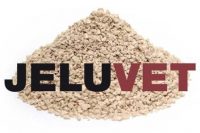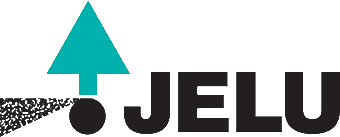The substance flow balance of the significantly strengthened German Fertiliser Application Ordinance forces agricultural enterprises to set the phosphorus and protein content of the feed accurately. An oversupply of protein leads to increased nitrogen excretion via urine or faeces, depending on digestibility. An oversupply of phosphorus leads to increased excretion via the faeces, also depending on digestibility. The farmer faces the challenge of supplying the animals with a diet that covers the animals’ phosphorus and protein requirements, while minimizing the phosphorus and nitrogen content in animal excretions. Consequently, there is little room for variation in the phosphorus and protein content. Different crude fibre sources can add different amounts of additional phosphorus and additional protein to the ration. Lignocellulose, which is low in phosphorus and nitrogen, is especially suitable for use as a crude fibre component for a phosphorus- and nitrogen-reduced feeding strategy. With JELUVET®, we offer a fibre that provides animals with a (heavily) N-/P-reduced diet.

Picture: © Eric Isselée – Fotolia.com
The new German Fertiliser Application Ordinance (Düngemittelverordnung, DüV) poses a big challenge for agricultural enterprises: the control values for the operational nutrient surplus will be gradually reduced in the next few years. Thus the limit values for nitrogen (N) and phosphorus (P) input into agricultural land will decrease. To be able to adhere to the limit values, agricultural enterprises must accurately monitor animal excretions. Depending on the size of the enterprise, a yearly substance flow balance for nitrogen and phosphorus/phosphate is required per operation as required by the German Substance Flow Balance Ordinance (Stoffstrombilanzverordnung, StoffBilV).
The phosphorus requirement of livestock is well researched, and supply recommendations exist for many types of animals and their production phases. Today, it is not the undersupply of animals with phosphorus that poses a challenge for agricultural operations, but oversupply. Depending on the components, the overall phosphorus content of many feeds often exceeds the animals’ nutritional requirements. Most compound feeds contain phytate-bound phosphorus in addition to free phosphorus. Phytases also make available the phytate-bound phosphorus so that the organism of monogastrics can use it. If required, phytases are added to compound feed. Phytases in the feed – both plant-intrinsic and added – and microbial phytases found in the digestive system of the animals improve the digestibility of phosphorus. The excess phosphorus, which the animal organism cannot absorb, is excreted undigested and negatively affects the substance flow balance and the nutrient balance of the operation.
As regards the protein requirement, the situation is similar. By feeding protein contents that are far higher than required by the animals, the farmers could ensure that even the limiting amino acids were sufficiently taken up and that no performance deficit (growth, milk yield etc.) occurred. If, however, the crude protein content of a feed ration is reduced, efficient usage of nitrogen increases, while nitrogen excretion via urine and faeces decreases. In pig and poultry farming as well as dairy cattle farming, the nitrogen excretion can be efficiently reduced by specifically using feeds and adjusting the phase feeding concept. Studies in a dairy cattle farm (Broderick et al., 2008) showed that, when feeding the dairy cattle with protein-reduced feed, it is above all the amino acid methionine that is limiting. If it is supplemented with other amino acids that may be reduced in the feed protein as metabolised amino acids, space emerges in the ration that can be used for other important nutrients and crude fibre rations.
Nutrient balance in agriculture
To be able to meet the limit values for N and P input, it becomes necessary to balance the nutrient flows as stipulated by the new Fertiliser Application Ordinance. The nutrient balance documents the nutrient cycles of an agricultural enterprise. For this purpose, the nutrient input and the nutrient output of an operation are related to each other in a nutrient comparison. For an agricultural enterprise to achieve sound development, optimal nutrient usage is required.
To implement a feeding method that is greatly or extremely reduced, the following measures are necessary:
- Determining the animals’ nutritional requirements by carrying out regular performance controls and observing the current supply recommendations
- Subjecting internally produced and externally purchased feed components to standard tests
- Targeted feed monitoring: comparing feed calculation and analysis as well as verifying the actually consumed feed amounts and the performance data resulting therefrom
- Complying with high standards in feed hygiene and feed preparation
- Controlling the nutrients and the P/N content when using by-products (dry matter, hygiene)
- Ensuring optimal water supply
- Regularly controlling automatic feeding: verifying food intake and reducing feed loss
- Taking into account the digestibility of nutrients in the ration
- Adjusting feeding to the nutritional requirement in the phases (e.g. starter feed, grower feed or finisher feed for broilers)
Ammonia emissions to be regulated in future (TA Luft)
In the case of oversupply with feed proteins and N-containing compounds, an increased amount of nitrogen is excreted as urea in urine, among other things. Urea is transformed to ammonia and CO2 by ubiquitous ureases. In the oversupply range the following applies: 10 g less crude protein in the animal diet is equal to 10% less ammonia emissions.
Ammonia emissions from intensive poultry and pig husbandry will in future be regulated by the German air quality control regulation TA Luft. Crude fibre sources that are low in N, such as lignocellulose, help to prevent unnecessary ammonia emissions.
Phosphorus- and nitrogen-reduced feeding strategies for cattle, pigs and poultry
A current study that provides exemplary analysis of the data of 22 piglet producers and pig farms in Bavaria, Germany, for the business year 2017/2018, has shown that brought-in feeds are responsible for up to 76% of nitrogen input and up to 89% of phosphate input into the substance flow balance.
If protein and mineral feeds are specifically considered in a pig feed ration, these two feed types contribute most of the phosphate and nitrogen to the purchased feed. Fibre blends, however, also contain P and N in different concentrations.
To make sure that the limit values for nitrogen and phosphorus input into agricultural land are not exceeded, a phosphorus- and protein-reduced feeding strategy is necessary. This enables the phosphorus and protein requirements of the animal organism to be met, while reducing the content of phosphorus and nitrogen in the animal excretions to a minimum. A comparison of the phosphorus and nitrogen content of different crude fibre sources is required for this. Crude fibre components with a high phosphorus and nitrogen content increase the overall phosphorus/overall nitrogen content of the rations and often the amount of phosphorus/nitrogen in the animal excretions (manure). The phosphorus and nitrogen content in some typical crude fibre sources is very high and can vary depending on the time of year, weather and cultivation region. Regular analyses of major minerals in the feed are essential to avoid putting a further strain on the substance flow balance.

Picture: © JELU-WERK – www.jelu-werk.com
The natural lignocellulose JELUVET® has an extremely low content of phosphorus and nitrogen. The overall phosphorus content – both free phosphorus and phytate-bound phosphorus – and the overall nitrogen content are below the detection limit of 0.1 g/kg original substance (own analyses, P: method according to DIN EN 15621, N total §64 of the German Food and Feed Code (LFGB) L 06.00-7). Lignocellulose therefore does not add additional phosphorus or nitrogen to the ration when used as a crude fibre component. Lignocellulose helps you to reliably adjust the crude fibre content of compound feed without adding further phosphorus and nitrogen to the ration. Therefore, lignocellulose, which is low in phosphorus and nitrogen, is especially suitable for use as a crude fibre component for a phosphorus- and nitrogen-reduced feeding strategy.
Comparison of the phosphorus content of some crude fibre sources
Comparison values of the phosphorus content in some crude fibre sources (all values are from the Gruber feeding value table [Issue 43, Version 2017], except the values for lignocellulose. The values of lignocellulose originate from own analyses.)
| Crude fibre source | Dry matter in g | Crude fibre in g/kg dry matter | Phosphorus in g/kg dry matter |
| Meadow grass 1st clipping (end of flowering) | 220 | 312 | 3.3 |
| Wheat straw | 860 | 430 | 0.8 |
| Oat straw | 860 | 440 | 1.4 |
| Maize grain silage (coarse meal) | 650 | 25 | 3.5 |
| Lucerne grass silage (during flowering) | 350 | 300 | 3.4 |
| Malt shoots | 920 | 145 | 8.1 |
| Wheat feed flour | 880 | 91 | 10.3 |
| Lignocellulose | 880 | 700 | < 0.1 |
Comparing phosphorus and nitrogen values of other feeds from the StoffBilV
Comparison values for the phosphorus and nitrogen content of some feeds (all values from the StoffBilV, except the lignocellulose values. The lignocellulose values originate from the crude fibre monitoring 2011/2013 as well as from own analysis).
| Crude fibre source | Dry matter content % | kg P/ql feed | kg N/ql feed |
| Rye bran | 88 | 11.2 | 25.9 |
| Wheat straw | 86 | 0.13 | 0.50 |
| Oat straw | 86 | 0.13 | 0.50 |
| Soya husks | 88 | 1.6 | 21.6 |
| Dried pulp | 90 | 1.0 | 13.3 |
| Wheat bran | 88 | 13.1 | 25.6 |
| Lignocellulose | 88 | <0.1 | < 0.1 |
